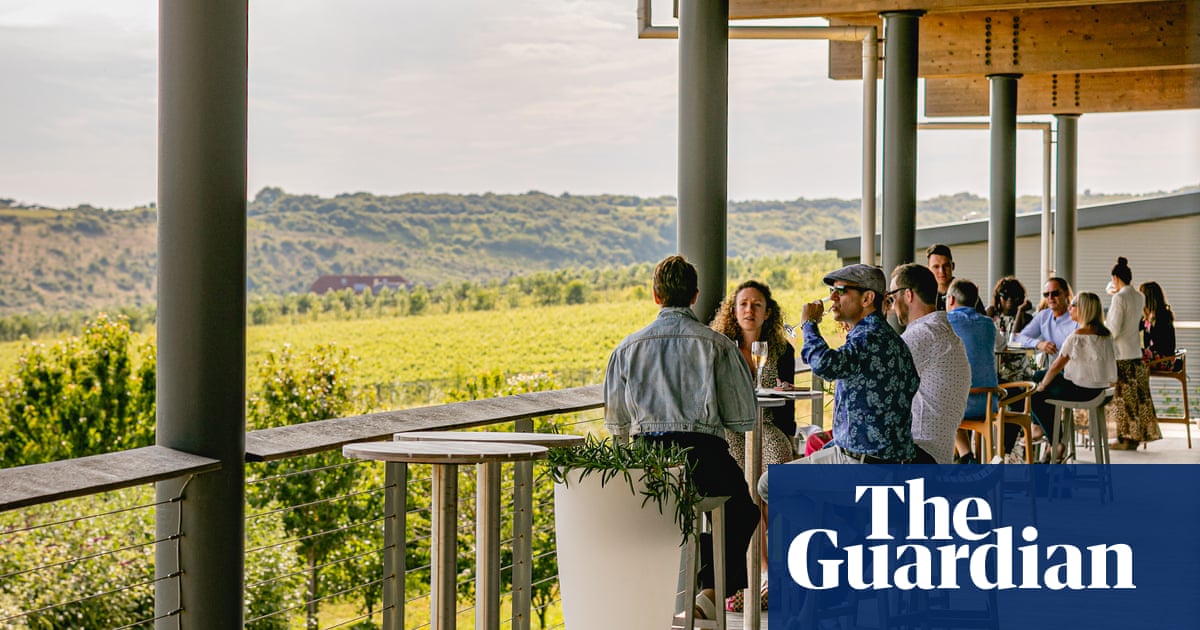The best time to visit an English vineyard as a punter is right now(in my opinion, of course, but surely a personal column doesn’t need that caveat every week). Hear me out: in winter, a vineyard is all gnarled wood and hard soil, which is an aesthetic I can get behind (no surprise there), but it’s perhaps not the most evocative for drinkers who want a sense of place. Winter is a good time to visit as trade, mind, because the winemaker actually has time to think about their answers to your questions, rather than panicking about whether they should have waited to bring in the ortega.
Then there’s summer: the grapes are hanging pregnant on the vine, it’s sunny, it’s sublime, but there’s simply too much work to do. As a visitor, you always feel as if you’re standing in the wrong place and you feel a bit guilty asking for a tour. But in late spring and early summer, there’s a gentle hum of anticipation. Things are about to get started.
Most British wineries are concentrated down south (sorry, fellow northerners), and one region in particular really pulls in the wine tourists: Sussex. It is, like most regions in the south of England, known for producing sparkling wine, and received a PDO (protected designation of origin) in 2022. To get the PDO, Sussex sparklingmustbe made in the traditional, champagne-style method, and it must also be approved by an accredited organisation that’s part ofthe Food Standards Agency.
OK, that’s all good to know and everything, but where can I go to drink the stuff? England’s largest single-estate organic wine producer,Oxney, is one of my favourites to visit, and it’s the . It’s all charred timber buildings and feels a lot more intimate than other, bigger operations nearby, and itssparkling non-vintage roséis a perennial crowdpleaser (as, for that matter, are any of its vintage stuff, if you can get hold of it). There are vineyard cottages for larger group visits and a couple of shepherd’s huts for couples.
Rathfinnyis another vineyard with charming rooms, and several places to eat/drink extremely well (it tends to be a bit windy, though, so pack a sensible windbreaker), whileStophamrecently reopened its Saturday tasting tours with the winemaker. And though I haven’t yet been myself, I’ve been told thatArteliumis a real treat, and I really like their wines. Much the same goes forWiston’s lavish sparkling wines, and I definitely need to put faces to the names.
Today’s pick features a few Sussex wines to get you in the mood for a late-spring excursion. Yes, they’re a fair bit spennier than my usual recommendations, but I’ve already explained the reasons behind the relative expense of English wine inan earlier column. Besides, things are often cheaper at the cellar door, which gives you one more reason to visit and support these English wineries directly.
Nutbourne Vineyards Sussex Reserve 2022£15.49 Grape Britannia, 12%. A peachy, fliny blend of Germanic varieties and pinot noir.
Artelium Pinot Noir 2023£28 Artelium, 12%. England produces some actually good red wines! And this one is bright and aromatic.
Oxney Organic Estate NV Brut Rosé£28 Waitrose, 11.5%. Orchard fruit, strawberry patisserie – and a snip compared with champagne
Wiston Estate Rosé£38 Wiston Estate, 12%. Generous pink sparkling with seasonal English fruit and great acidity
